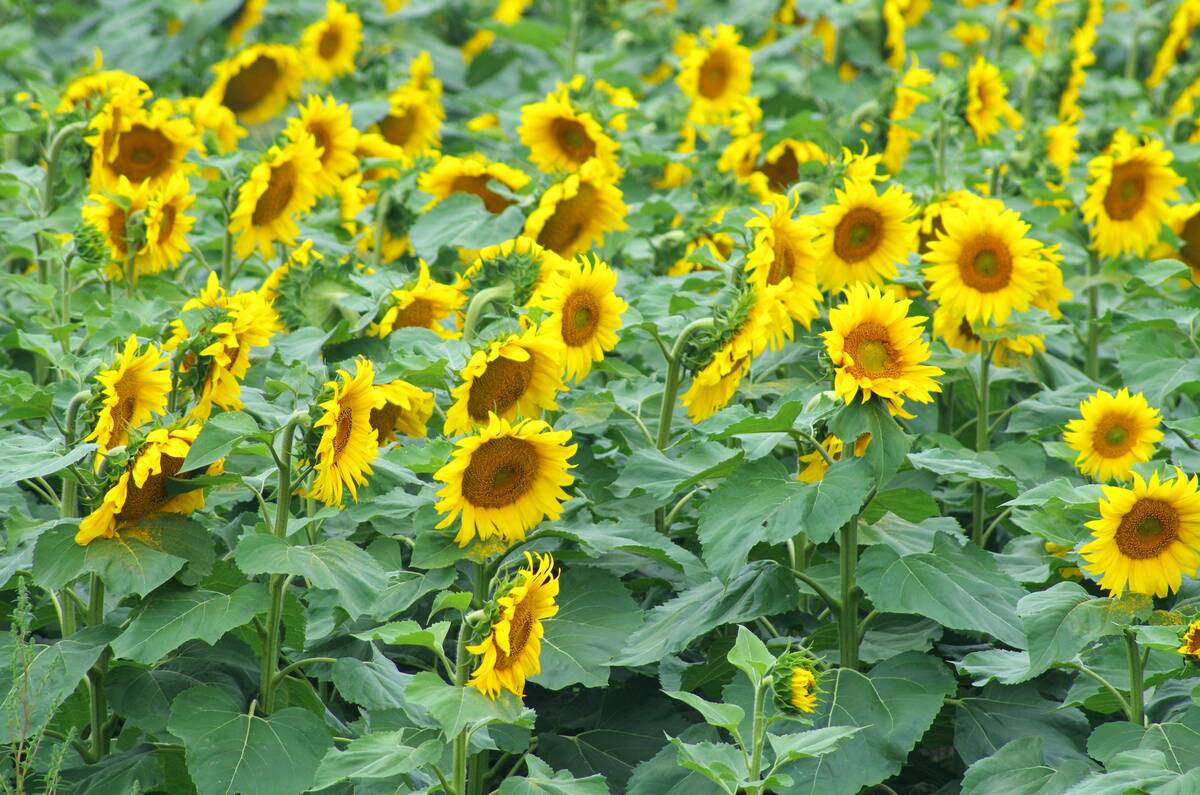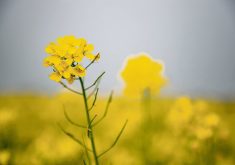Glacier FarmMedia – For the first time, Manitoba sunflower growers will have a chemical means of keeping blackbirds off their crop this harvest.
Bird repellent product Avian Control has received approval for emergency use, Manitoba Agriculture noted in a recent provincial crop update.
The emergency registration, effective from Aug. 18, 2025, through Aug. 17, 2026, allows producers to apply the methyl anthranilate-based repellent up until harvest day, said a crop pest update issued last month.
Read Also

VIDEO: Agritechnica Day 4: Robots and more robots, Nexat loves Canada and the trouble with tariffs
Agritechnica Day 4: Robots and more robots, Nexat loves Canada and the trouble with tariffs.
“It’s a new product, and we’re looking to get some feedback on it, too,” Kim Brown, weed specialist with Manitoba Agriculture, said during an Aug. 27 webinar hosted by the department.
It’s an emergency registration, which means it may not be a full registration. Going forward, it’ll be evaluated.”
The agriculture department and the Manitoba Crop Alliance, which represents sunflower growers in the province, have previously worked toward the emergency registration.
The approval comes at a crucial time for sunflower producers.
University of North Dakota research suggests most blackbird damage happens during a narrow window in fall when bird populations peak alongside mature, unharvested crops.
In a previous interview with Glacier FarmMedia, Manitoba Agriculture oilseed specialist Sonia Wilson pointed to particular concern during September and October.
The challenge is compounded by the birds’ flocking behaviour. When blackbirds target a field, damage can be swift and severe, with the birds moving collectively and concentrating feeding activity in specific areas.
Avian Control’s manufacturer, Avian Enterprises, claims its research has found pest birds cause up to US$3 billion in annual agricultural damage across North America, with individual crop losses ranging from 20 to 87 per cent in severely affected fields.
In Manitoba’s neighbour, North Dakota, sunflower growers lose an estimated $3.5 million annually due to blackbird damage.
Avian Control works by irritating birds’ sensory systems, forcing them to seek feeding areas elsewhere, according to a white paper published by Avian Enterprises. It doesn’t permanently harm, the company added.
Unlike traditional scare tactics, such as audio devices or visual deterrents, the chemical approach creates lasting behavioral changes in pest bird populations, the paper said.
The repellent creates an ultraviolet “stain” visible to birds but not humans, which serves as a warning signal that trained birds learn to avoid. The product does not penetrate crop tissues, preserving the natural taste of treated sunflowers, Avian Enterprises says.
The active ingredient, methyl anthranilate, occurs naturally in some fruits and flowers and is “generally regarded as safe” by the U.S. Food and Drug Administration. The compound has been approved for bird control in the United States for several years.
“It’s a bird repellent. It’s not a control,” said John Gavloski, an entomologist with Manitoba Agriculture.
“It doesn’t kill blackbirds.”
Brown and Gavloski believe the product may be valuable to producers if proven effective through field testing. They’re now putting the call out for producers willing to share real-world field experience.
“We’re still looking for more information on this product, so if anyone does use this product, we’d be really interested to know how effective it was,” Gavloski said.
Added Brown: “It’s something that we need to evaluate going forward, but it is a brand-new product.… If it works, it would be a great tool to have because we know that blackbirds can cause lots of issues.”
Avian Enterprises argues that Avian Control breaks away from earlier methyl anthranilate products based on better stability and more ability to withstand rain. Previous formulations had an efficacy window of two to three days, the company said. The newer chemistry is supposed to provide protection for up to 14 days under field conditions.
Manitoba producers currently rely on various strategies to limit blackbird damage, including visual deterrents, harassment techniques with noise makers or drones and sound devices that mimic predator calls. However, results have been mixed, and some producers have found certain audio deterrents more successful than others.
The chemical repellent is a different tactic that could complement existing management strategies, advocates note, particularly since traditional methods often require constant monitoring and adjustment.
Manitoba Agriculture recommends withholding application if rain is expected within 12 hours. The methyl anthranilate may also cause temporary leaf discoloration or burn, prompting recommendations that producers test small areas before spraying the wider field.
“One of the things on the label that’s worth noting is that it’s recommended just to do small groups of plants first and observe things for five to seven days before you do a much bigger area, just in case there is any potential damage to plants,” Gavloski said.
















